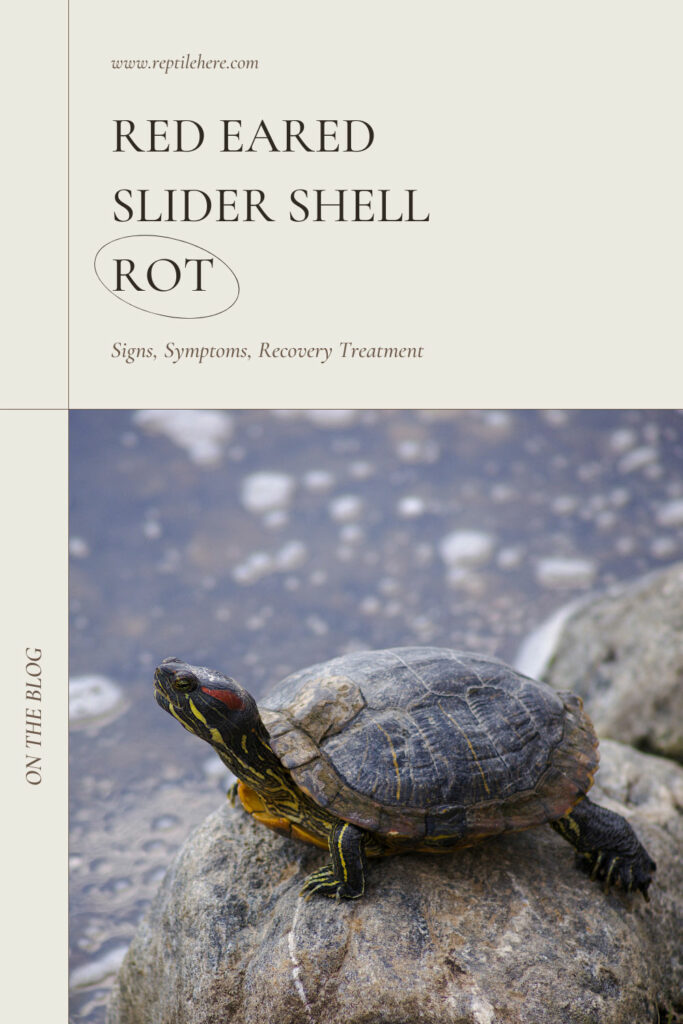Red Eared Slider Shell Rot: Signs, Symptoms, Recovery Treatment
Shell rot is a fatal disease. It affects many turtles besides red-eared sliders. Hence, it is important to know the signs, symptoms, and proper treatment to keep your turtle healthy.
So, how can I tell if my red-eared slider has shell rot? If shell rot happens to your red-eared slider turtle, the common symptom is the shell may become soft and discolored. The shell can also be damaged.
Shell rot is such a thing to watch out for carefully as otherwise, it might occur death. Since it is a serious issue, we guess you have a lot of questions about “how and why”. We will try to elaborate on all the questions and will discuss other necessary concerns here.
Red Eared Slider Shell Rot: Signs, Symptom & Recovery Treatment
Contents
There are several things you need to know when you will do a study about shell rot in red eared sliders. First, look at this table below to have the entire walkthrough explained shortly.
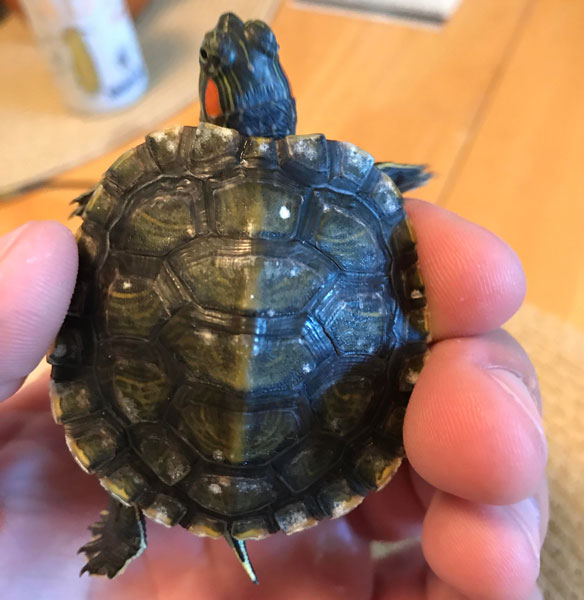
| Causes | Symptoms | Treatment |
| Fungal Infection | Damaged Shell | Antifungal medications and topical ointmentsSurgery (in severe cases) |
| Lack of proper nutrition | Lethargy and lack of appetite | Follow the treatment plan prescribed by veterinarian |
| Metabolic bone disease | Unpleasant Smell from the affected area | Keeping the turtle in an clean and dry environment |
Please keep in mind these are only the general symptoms and causes. You may have noticed some other symptoms or find out other causes. These are rough overviews.
Why Is A Turtle Affected By Shell Rot?
Generally, turtles can develop an unhealthy turtle shell if they do not receive the proper nutrition and care. However, these are the three common causes of a turtle developing shell rot.
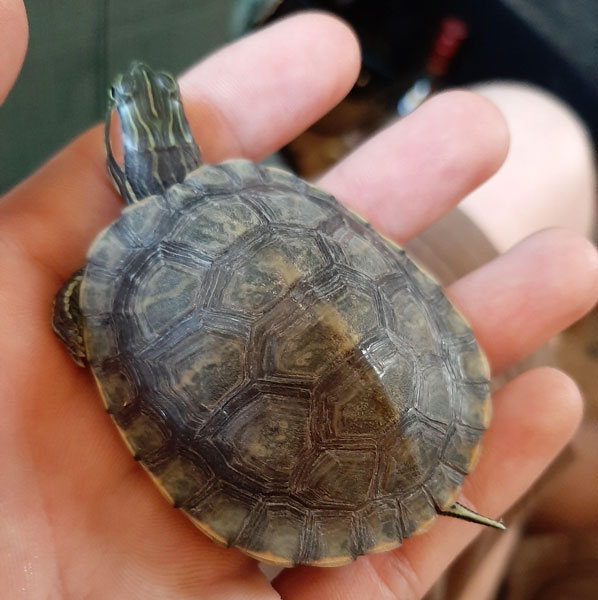
- One of the main causes of shell rot is a fungal infection. This can occur when the turtle’s shell becomes wet and stays wet for too long. And it can happen if the turtle is kept in a damp or poorly ventilated enclosure or if it is not dried off properly after being in the water.
- Besides, a lack of proper nutrition and care is another important cause that helps develop shell rot. In this case, turtles require a specific diet and care regimen to maintain a healthy shell.
- Lastly, another shell rot cause is a metabolic bone disease, which is caused by a lack of calcium and vitamin D3 in the turtle’s diet. This can cause the turtle’s shell to become weak and brittle, making it more prone to fungal infections and shell rot.
What Are The Signs And Symptoms Of Red Eared Slider Shell Rot?
As previously stated, shell rot, also known as bad turtle shell rot, is a major problem for red-eared sliders that must be addressed. You must be aware of some of the most prevalent signs to understand and identify them sooner.
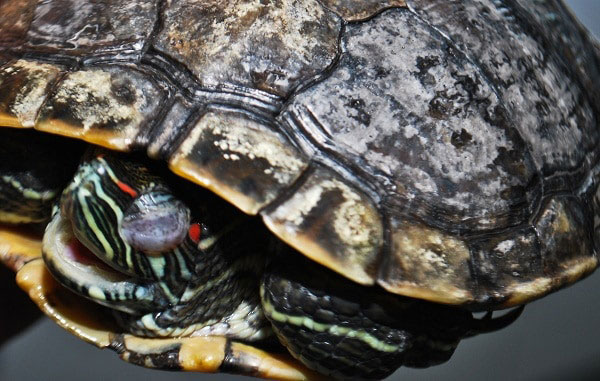
The softness of the shell
One of the most notable signs of this disease is a softness in the turtle’s shell. This can be caused by the fungal infection or fungus breaking down the structure of the shell, making it more pliable and less durable.
Discoloration of the shell
Another shell rot sign is the discoloration of your red-eared slider’s shell. This can include white or yellow spots on the shell, as well as discoloration of the surrounding area. A fungus infection is clearly shown by this.
Cracking or holes in the shell
In shell rot advanced stages, the turtle’s shell also begins to crack or develop holes. This is a clear sign that the infection has progressed and needs immediate attention.
Lethargy and lack of appetite
Turtles suffering shell rot might also display signs of lethargy and a lack of appetite. They may be less active than usual and may not be interested in eating. This is a clear indication that your red eared slider is being attacked by fungus.
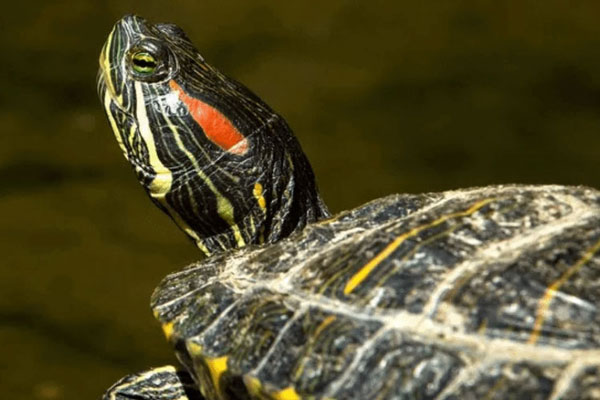
Unpleasant smell from the affected area
This is produced by the fungus or bacteria breaking down the shell, which produces a horrible smell. And this discharge may also indicate underlying metabolic bone disease, which can complicate the shell rot condition and should be addressed quickly by a veterinarian.
If your red eared slider is showing any of these symptoms, it is important to take it to a veterinarian as soon as possible. Early detection and proper treatment are essential in preventing further damage to the turtle’s shell and ensuring a full recovery.
What Does Shell Rot Look Like?
Shell rot can appear in a variety of ways, depending on the severity of the infection. In its early stages, it may look like small white or yellow spots on the shell.
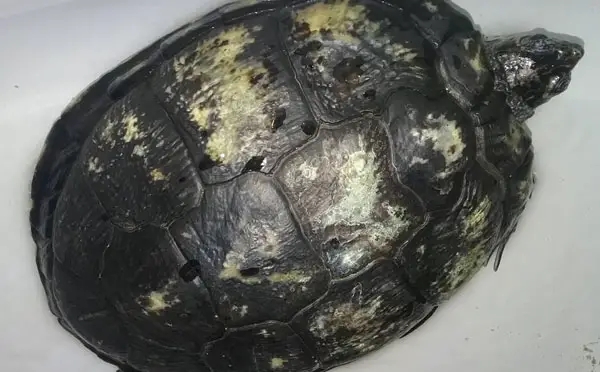
As the infection progresses, the shell may become soft and discolored, and there may be cracking or even holes in the shell. If you notice any of these signs, it is important to take your turtle to a veterinarian as soon as possible.
Can Turtle Recover From Shell Rot?
Yes. With proper treatment, most turtles can recover from shell rot. However, it is important to catch the infection early and follow the treatment plan prescribed by your veterinarian.
The treatment plan will depend on the severity of the infection. But it will usually include a combination of antifungal medications and topical ointments to be applied to the affected area. In some cases, surgery may be necessary to remove the infected or damaged parts of the shell.
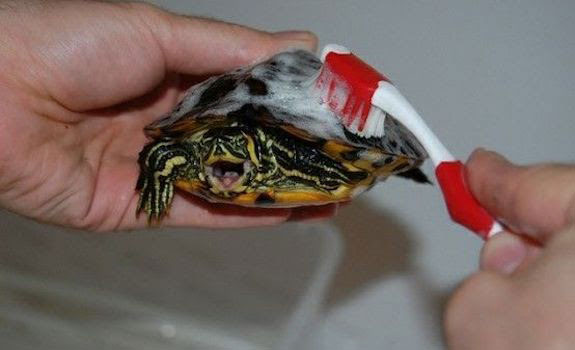
However, it is important to note that shell rot should not be confused with shedding. That is because shedding is a natural process where the turtle sheds its old scutes to make room for new growth. Although an unhealthy turtle shell shedding should be examined to be sure whether it is sick or not.
So, overall, it is so to say, most turtles can recover from shell rot. But before treating the affected area, it’s important to understand shell rot vs shedding.
How Do You Know If Shell Rot Is Healing?
There are several signs to track down to know the shell rot is healing.
- When the turtle responds well to medication, the shell begins to harden and the discoloration fades. This is a clear sign that the fungal infection is being treated efficiently and that the shell is beginning to mend.
- The turtle will also start to show signs of improvement in their overall health, such as increased appetite and energy. These are signs that the turtle is responding well to the shell rot treatment for red-eared sliders and that their body is starting to repair itself.
- In addition to observing the turtle’s shell and overall health, it’s also important to keep track of the turtle’s weight, as weight loss can indicate a lack of appetite and poor health.
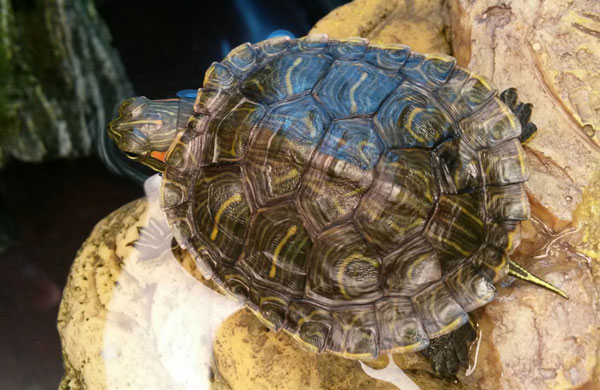
That means regularly measuring the turtle’s weight and comparing it to previous measurements can indicate the turtle’s overall health.
- Furthermore, it is essential to watch the turtle’s behavior; if the turtle becomes more active, responsive, and engaged, this is an indicator of healing.
- A healthy turtle’s shell should also be shiny and firm; if the shell is still mushy or discolored, the mending process has not been finished.
Red Eared Slider Shell Rot Treatment Guide for Beginners
If you’re a beginner-level petter, you need to know how to put your red eared slider properly. A couple of things may make your life easier in that case. Hence, a few tip are mentioned below.
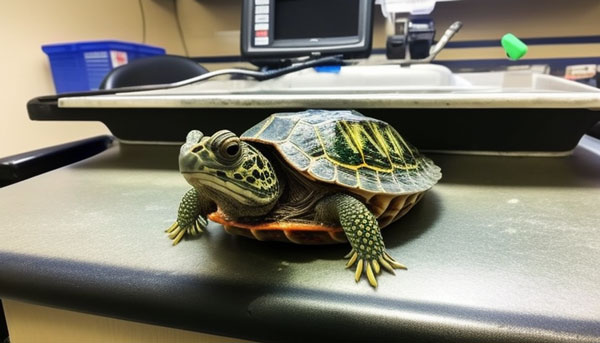
- Treatment for shell rot typically involves the use of antifungal medications and topical ointments
- In severe cases, surgery may be necessary to remove infected areas of the shell
- It is important to follow the treatment plan prescribed by your veterinarian
- Keeping the slier in a clean and dry environment to prevent further infection is crucial
- Monitor the red eared slider’s health and shell condition regularly
- Follow up with your veterinarian for regular check-ups to ensure that the turtle’s shell is healing properly
All in all, Giving proper attention and monitoring the body language should be one of the core priorities for a beginner level petter.
How Long Does It Take For A Turtle’s Shell Rot To Heal?
In some cases, it may take several days or weeks for the shell to fully heal. The length of time it takes for a turtle’s shell rot to heal will depend on the severity of the infection and the effectiveness of the treatment.
You should continue monitoring the turtle’s health even after the shell appears to have healed. Shell rot medicine should be given on a timely basis during the healing process time.
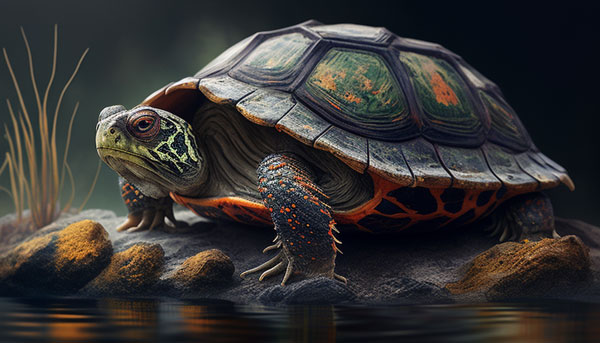
In general, if you apply the suggested cream or medication as per medical experts, it should get healed earlier. There are some antifungal medications available in the nearest pharmacy. Get your shell rot-affected turtle prescribed and buy these medicines, it will get healed within a few days.
How to Prevent Shell Rot?
Preventing shell rot is essential to keep your turtle healthy. The following are some key steps that you can take to prevent red eared slider unhealthy turtle shell rot.
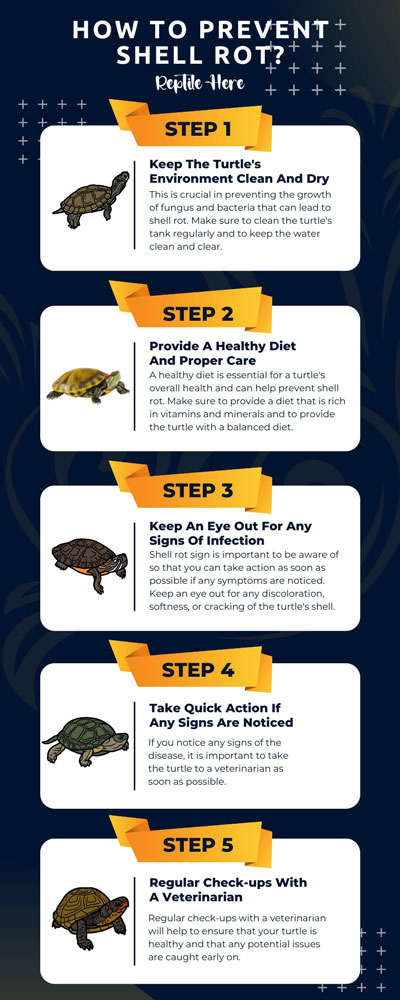
Step 1. Keep the turtle’s environment clean and dry
This is crucial in preventing the growth of fungus and bacteria that can lead to shell rot. Make sure to clean the turtle’s tank regularly and to keep the water clean and clear.
Step 2. Provide a healthy diet and proper care
A healthy diet is essential for a turtle’s overall health and can help prevent shell rot. Make sure to provide a diet that is rich in vitamins and minerals and to provide the turtle with a balanced diet.
Step 3. Keep an eye out for any signs of infection
Shell rot sign is important to be aware of so that you can take action as soon as possible if any symptoms are noticed. Keep an eye out for any discoloration, softness, or cracking of the turtle’s shell.
Step 4. Take Quick Action if Any signs are Noticed
If you notice any signs of the disease, it is important to take the turtle to a veterinarian as soon as possible. This will help to ensure that the turtle receives the proper treatment and that the infection is caught early on.
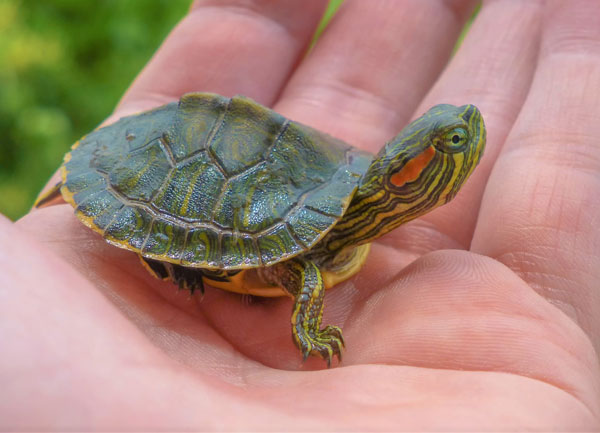
Step 5. Regular check-ups with a veterinarian
Regular check-ups with a veterinarian will help to ensure that your turtle is healthy and that any potential issues are caught early on. This is essential in preventing shell rot from recurring and in ensuring the long-term health of your turtle.
FAQs
Have a look at this section if you have any further inquiries.
A: Yes, it is contagious to other turtles. Therefore, it’s important to isolate an infected turtle to prevent the spread of the infection to other turtles if any signs have been noticed.
A: Yes, it can cause death. Provided that if the infection is left untreated, it can cause permanent damage to the turtle’s shell and may even be fatal.
A: Yes, overcrowding can contribute to shell rot for your red eared slider. It can lead to poor water quality and high levels of bacteria and fungi, which can direct to infections.
Conclusion
In conclusion, many turtles are afflicted with the deadly illness known as shell rot. It is important to be aware of the signs and symptoms that represent shell disease and to take action as soon as they are noticed.
Keeping your red eared slider in a clean and dry environment can help to prevent further infection and aid in the healing process. Also, it is important to prevent shell rot by providing a healthy diet and proper care and having regular check-ups with a veterinarian.
